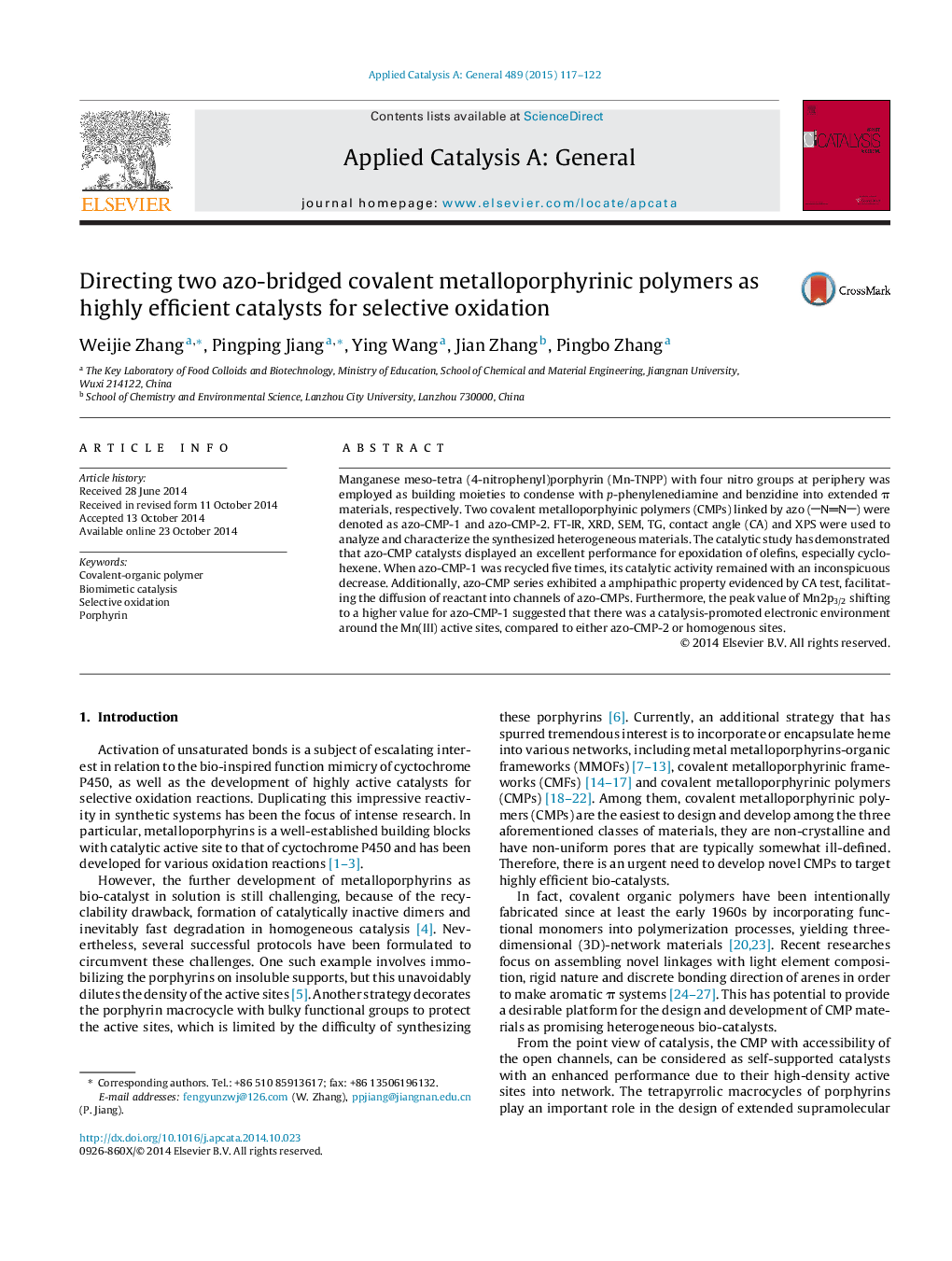| Article ID | Journal | Published Year | Pages | File Type |
|---|---|---|---|---|
| 39400 | Applied Catalysis A: General | 2015 | 6 Pages |
•Two covalent metalloporphyrinc polymers linked by azo (NN) bond were developed as novel materials.•An excellent conversion with high selectivity was observed.•The catalytic activity remained when the catalysts were recycled five times.•A catalysis-promoted electronic environment around the Mn active sites was demonstrated.
Manganese meso-tetra (4-nitrophenyl)porphyrin (Mn-TNPP) with four nitro groups at periphery was employed as building moieties to condense with p-phenylenediamine and benzidine into extended π materials, respectively. Two covalent metalloporphyinic polymers (CMPs) linked by azo (NN) were denoted as azo-CMP-1 and azo-CMP-2. FT-IR, XRD, SEM, TG, contact angle (CA) and XPS were used to analyze and characterize the synthesized heterogeneous materials. The catalytic study has demonstrated that azo-CMP catalysts displayed an excellent performance for epoxidation of olefins, especially cyclohexene. When azo-CMP-1 was recycled five times, its catalytic activity remained with an inconspicuous decrease. Additionally, azo-CMP series exhibited a amphipathic property evidenced by CA test, facilitating the diffusion of reactant into channels of azo-CMPs. Furthermore, the peak value of Mn2p3/2 shifting to a higher value for azo-CMP-1 suggested that there was a catalysis-promoted electronic environment around the Mn(III) active sites, compared to either azo-CMP-2 or homogenous sites.
Graphical abstractFigure optionsDownload full-size imageDownload high-quality image (152 K)Download as PowerPoint slide
